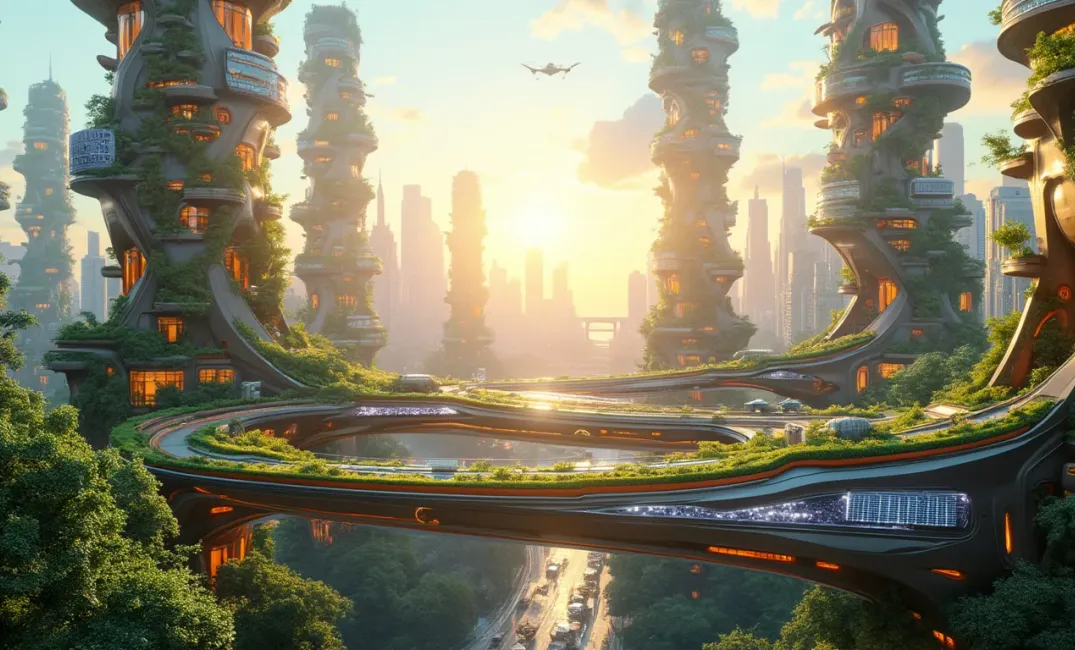The Architecture of Human Progress
Architecture is an enduring testament to human ingenuity, mirroring the evolution of societies through its enduring structures and sweeping innovations. Beyond mere physical shelters or monumental achievements, it bridges time, expressing the human spirit's creativity, adaptability, and resilience.
"Architecture is the learned game, correct and magnificent, of forms assembled in the light." — Le Corbusier
The Genesis of Architecture: Crafting Early Shelters and Monuments
Primitive Dwellings: Necessity and Ingenuity
- Early Human Habitats: From the earliest caves to rudimentary huts made of mud, straw, and stone, these structures provided protection and reflected emerging social complexities.
- Symbolism in Neolithic Monuments: Megalithic constructions like Stonehenge and Göbekli Tepe served as early examples of collaborative architectural ventures encompassing spirituality and social cohesion.
Ancient Civilization’s Architectural Marvels
- The Pyramids and Temples of Ancient Egypt: Exemplifying precision and grandeur, the pyramids of Giza embody Egypt's mastery in stone architecture, aligning beliefs and pharaohs' authority with celestial ambitions.
- Ziggurats and Urban Planning in Mesopotamia: Sumerians initiated early urban planning, evidenced by ziggurats that centralize societal and political life.
Architecture Through the Ages: Evolution and Innovation
Classical Orders and Renaissance Revival
- Greek and Roman Contributions: The classical orders rooted in symmetry and geometry extended with Roman arches and aqueducts, integral to civic infrastructure.
- The Renaissance Resurgence: A revival of classical ideals infused with scientific insight, it encouraged architects like Brunelleschi to innovate with perspective and proportion.
The Advent of Gothic and Baroque
- Gothic Verticality and Light: With soaring cathedrals, Gothic architecture introduced ribbed vaults and stained-glass windows, aspiring to induce spiritual elevation.
- Baroque Opulence and Dynamics: Marked by undulating facades, Baroque architecture cultivated an experience of movement, aligning with religious and absolutist expressions.
Modern Architecture: From Industrial Innovations to Postmodern Expressions
Industrial Revolution and New Materials
- Steel and Glass Revolutions: The Industrial Revolution redefined structural possibilities, exemplified by the Crystal Palace merging architecture with prefabrication.
- Skyscrapers and Urbanization: The late 19th and 20th centuries heralded the skyscraper, technological advancements evident in icons like New York's Woolworth Building.
Modernism and Functionalism
- Bauhaus and Beyond: Emerged from post-WWI ideals, advocating for functionality and minimalism, as seen in the works of Walter Gropius.
- The International Style and Brutalism: Characterized by geometric forms, the International Style became emblematic of mid-20th-century cities.
Architecture Today: Sustainable Designs and Global Impact
Sustainable and Biomimetic Approaches
- Green Architecture: Eco-centric designs emphasize energy efficiency and biodiversity, exemplified by Milan's Bosco Verticale.
- Biomimicry and Innovative Inspiration: Emulating biological processes, biomimetic architecture seeks symbiotic environmental relationships.
Global Influences and Cultural Identities
- Cross-Cultural Synthesis: Encourages hybrid structures that pay homage to heritage while accommodating modern functionality.
- Preservation and Adaptation: Preservation efforts advocate for maintaining cultural integrity and introducing adaptive reuses.
The Future of Architecture: Technological Frontiers and Creative Frontiers
Future Innovators and Technologies
- Digital Design and Parametricism: Utilizes algorithms to push possibilities with fluid forms, evident in the works of Zaha Hadid.
- Smart Buildings and AI Integration: AI and IoT foreseeably transform architecture into adaptive ecosystems optimizing climate control and energy use.
Cosmic Aspirations and Colonization
- Space Architecture: Concepts like 3D-printed lunar bases symbolize strides in adapting human comfort to alien landscapes.
- Virtual and Augmented Realities: Offers immersive experiences that blend virtuality with reality.
Conclusion: A Legacy of Human Architecture
"Architecture should speak of its time and place, but yearn for timelessness." — Frank Gehry
As it accompanies humankind on its cosmic passage, architecture continues to serve as a testament to intellect and dreams, enhancing our understanding of spacetime confines and addressing earthly wonders and cosmic queries.
MODERNISM, ARCHITECTURE, SPACE ARCHITECTURE, CULTURAL HERITAGE, EVOLUTION, SUSTAINABILITY, INNOVATION, FUTURE TECHNOLOGIES

